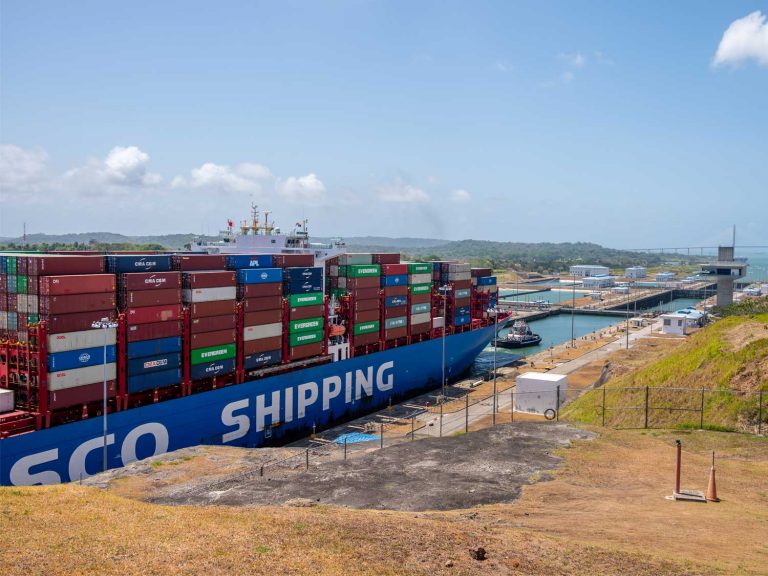
Date:
Transpacific container shipping
If we were to try and define a single factor that defined transpacific container shipping (along with most other routes) in 2023, it would probably be shipper complacency brought about by the rebalancing and normalisation of supply chains, following the unprecedented disruption of the COVID years.
However, ‘normal’ tends have a very limited span in shipping, and the next cycle of disruption is never far away.
The first warning signs began to emerge last summer when the Panama Canal Authority first began to restrict canal transits due to the historic drought impacting Central America.
Then in December the Red Sea Crisis first made headlines and within a matter of weeks hundreds of container ships were forced to divert away from the Suez Canal routing to avoid attacks by Houthi rebels off the western coast of Yemen.
The resulting diversion around southern Africa’s Cape of Good Hope has absorbed much of the capacity carriers had laid up during the lull, delayed cargo deliveries, and doubled rates on some lanes, while also prompting carriers to implement war-risk and other surcharges.
Cooling spot market
Spot rates from the Far East into the US have softened since the last round of GRIs at the start of February, with FAK rates into both the West Coast and East Coast falling slightly, but remaining at very elevated levels.
But a cooling spot market doesn’t mean the crisis is over, with spot rates from the Far East to the US West Coast still almost 200% higher than the end of 2023, with East Coast rates up 140% and the shipping lines will be doing everything they can to make the latest mid-February GRIs stick.
How long the Red Sea disruption will continue is unknown, but it’s likely that shippers will face pressure on prices and disruption through the first half of 2024.
Uncertainty and unease
While the Panama Canal situation did not result in excessive delays during H2 2023, it has created disruption and added cost, encouraging many US importers to seek East Coast services and/or overland rail connections from the West Coast.
And now we learn that, with the drought continuing, water levels in the reservoir that feeds the operation of the Panama Canal will sink below the record low levels seen last year – around 8ft lower than ideal for safe navigation.
If established rainfall trends hold, reservoir water levels will fall well below last year’s record lows, forcing limits on the number of vessels that use the canal, restrictions on vessel utilisations and surcharges of some 6.5%.
Add to that the uncertainty surrounding labour negotiations that will begin in the spring on a new longshore contract on the East and Gulf coasts, and 2024 is shaping up to be a year of great unease for transpacific shippers.
If you have any questions or concerns about the issues raised in this article, we can review your situation and explain your options, including alternative carriers, ports and routes.
To discover how we can support your transpacific or transatlantic trade, or to learn more about our ocean solutions, please EMAIL Metro’s Chief Commercial Officer, Andy Smith.
